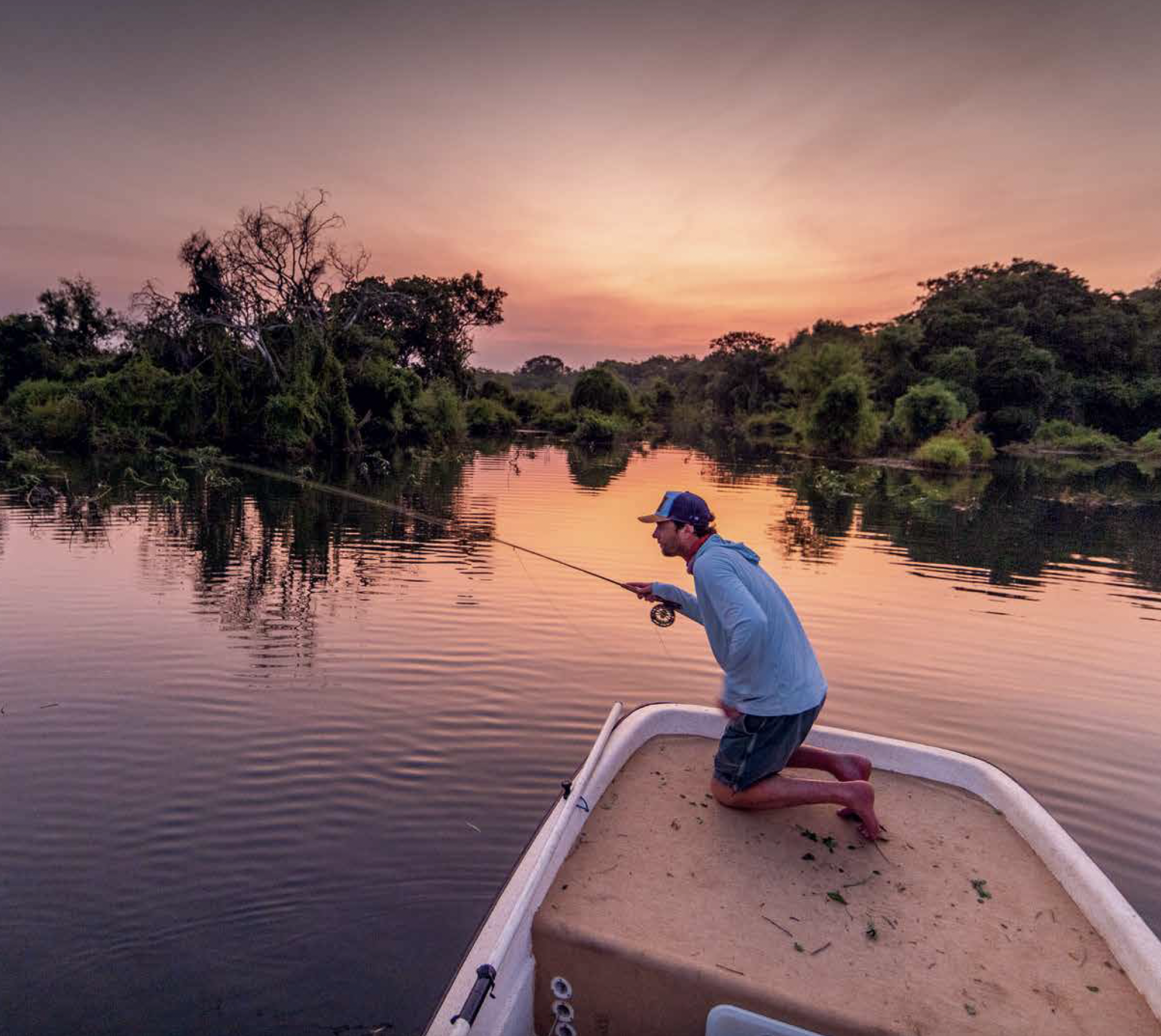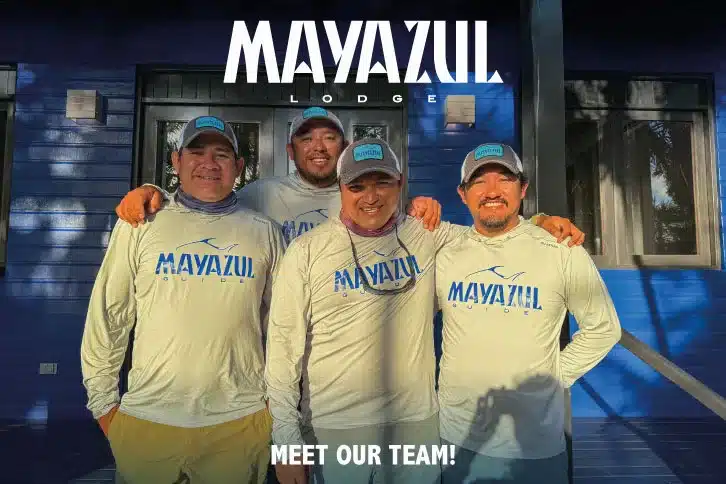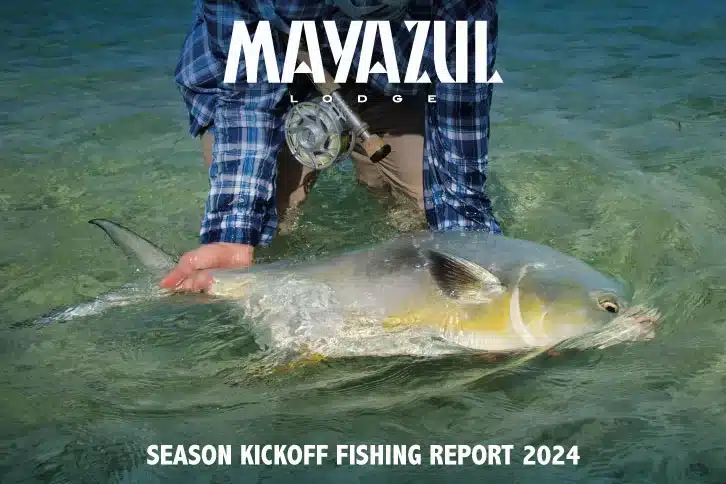Mayazul Lodge – Meet our team!
We are pleased to introduce our dedicated team of seasoned guides, where expertise meets passion. With deep knowledge of the As..

Itati, a humble farming village on Argentina’s remote northern border seems an unlikely spot to find a spectacular basilica, stretching fully eighty-eight metres into the sky.
The vast dome of this extraordinary edifice wouldn’t seem out of place gracing the skyline of Florence or Sienna yet instead it stands sentinel over this scruffy and utterly unremarkable little one horse town.
Religious pilgrims from all over the world flock here to worship at the Basílica Nuestra Senora De Itati , but the ‘duomo’ is also a revered landmark to those who make another long pilgrimage, to chase the golden treasure of the Parana River, that flows in its shadow.
Most avid fly anglers are familiar with Salminus Brasiliensis – the extraordinary and unique freshwater dorado. Many know of the remarkable Tsimane fly fishery – the celebrated dorado fishery deep in the Bolivian jungle. However, fewer will know that long before this remote and magical fly fishery was discovered, the pioneering fly anglers of Northern Argentina were targeting the big, bruising dorado of their own local river.
The parana birthplace and cradle of fishing for freshwater dorado on the fly
The Parana meanders down out of Southern Brazil and winds its way across the endless plains of Argentina before emptying into the Southern Atlantic. It is a vast river – the second largest in South America, second only to the Amazon herself. Its broad waters teem with fish: surubi catfish, sabalo, pira pita, Pacu and – of course – magnificent dorado that can reach thirty and occasionally even forty pounds in weight. The fishing is challenging and varied. The dorado can be targeted by blind casting to trees and bankside structure, by swinging flies over midwater boulders and – best of all – by hunting them by sight on the shallow, clearwater flats in a style reminiscent of saltwater bonefishing. The fish are no mugs. Occasionally, they go on wild feeding sprees – most often around dawn and dusk – and catching them, even the big ones, can be like shelling peas. Mostly, however, they are a stimulating and satisfyingly challenging adversary.
As well as chasing the Parana’s spectacular dorado, the avid fly angler can also target the hard-fighting omnivorous Pacu as they patrol the backwaters and island lagoons looking for berries and fruits that have fallen from the riverside trees.
Flies are simple colourful silicon balls that mimic the various berries and fruits that tumble into the water from the bankside trees, and the technique is simply to drop your presentation close to the cruising Pacu and allow the ‘fly’ to free fall through the water column.
Despite their appearance, Pacu will astonish you with their turn of speed and extraordinary fighting prowess. They are well worth targeting and offer a stimulating diversion when the dorado are refusing to play ball.
Be in no doubt, the dorado fishing on the Parana can be tough, especially when the river rises after rainfall in the headwaters. Long days in the fiendish heat can take their toll, but the rewards are surely worth it.
If you want to tackle these magnificent fish, take my advice. Stay at Suinda lodge, a five star home from home offering crisp white sheets, frosty air-conditioning and all the sybaritic comforts you could wish for after a long hot day on the water. Suinda also offers some of the best food and drink that you will ever enjoy anywhere.
Pablo Calo and his excellent staff provide a warm, informal ambiance and keep your glass topped up with icy gin and tonic or delicious plum coloured Malbec. In the evening, laughter and the intoxicating aroma of roast lamb and thick flame-grilled steaks fills the air, as anglers share their tall tales from the river and recharge in readiness for another day’s battle.
The days are divided into two sessions, with a welcome post-lunch siesta in between.
Being out at dawn can be intoxicating, but there is something particularly magical about fishing into the evening,
Across the river, smoke billows up from the Paraguayan farmlands into the thick evening air, softening the sunset and lending the wide Argentinian skies a rich, rosy hue.
Behind us, the little town starts to light up in readiness for the oncoming night. Music is in the air, and the lights of Itati’s vast basilica sparkle in the gathering twilight, their reflections dancing on the darkening waters of the Parana.
Once more, I take up station on the bow of the skiff and do as my excellent guide Pablo advises, pitching my fly towards the thickly wooded banks of the island. I draw the line tight and bring the big baitfish imitation flickering back over the sharply defined drop-off, the deeper, darker water still visible in the low evening light.
Without warning, the line comes up abruptly and savagely tight. I set hard and all the long hours of casting and retrieving are suddenly forgotten as a huge golden dorado that my imagination has barely dared to conjure clambers up into the last golden embers of the day.
We go at it hard. Trusting my knots and the stout 60lb wire trace, I play the giant fish with ruthless intent, desperate not to lose it. The dorado rattles up into the air once again, a gleaming golden trophy tantalisingly out of reach. I say a silent prayer and cling on tight.
Slowly, my adversary’s bulldogging runs become shorter, less ferocious. The fish attempts to jump again, but it is a tired, laboured effort that tells me that I am starting to gain the upper hand.
The fish attempts another surging drive for the sanctuary of the sunken trees but I hold him hard and as he kites around I get my first real look at him
There, deep in the bottle-green waters of the Parana is my prize: a sparkling great golden bullet of a thing that looks like no other fish on earth.
Pablo dips his cavernous landing net quietly into the water and after a few last, desperate lunges, I draw the fish to him. I hold my breath as our adversary makes one last bid for freedom and then finally he is ours.
Pablo lets out an infectious whoop of delight and congratulates me with a high five and a fierce hug. “It’s a beast!” he cries. I peer into the net and marvels at our prize. A great hulking fuselage of twenty four carat golden treasure – a mean malevolent killing machine.
Pablo holds the fish up for the camera and in the last golden rays of the sunset, it is a truly astonishing sight.
This is the fish I have traveled over 6000 miles and made a million casts to catch.
It has all been worth it.

We are pleased to introduce our dedicated team of seasoned guides, where expertise meets passion. With deep knowledge of the As..

We are delighted to have wrapped up the inaugural month of operations at Mayazul Lodge! Our intimate, beachfront lodge is locat..